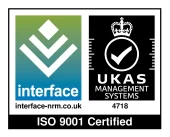The demand for flexible busbar has risen across various application sectors as systems become more compact, energy-efficient, and complex. In 2025, selecting the most suitable flexible busbar for your application is crucial for ensuring safety, reliability, and performance. Whether used in switchgear assemblies, control panels, electric vehicles, or renewable energy systems, choosing the appropriate component requires a clear understanding of several key factors.
In this guide, we’ll explore what flexible busbars are, why they’re essential, and how to confidently select the best option for your specific needs. This approach aligns with trusted engineering standards and practices in the UK, while also ensuring long-term performance in real-world applications.
Understanding Flexible Busbars and Their Purpose
A flexible busbar, also known as a laminated conductor or flexible copper connector, carries high electrical currents through confined spaces. Unlike rigid wires, flexible busbars handle thermal expansion, reduce vibrations, and solve alignment issues effectively.
They are commonly used in:
- Switchgear assemblies
- Battery connection systems
- Electric vehicle infrastructure
- Data centre power units
- Renewable energy applications
- Power conversion units in industrial facilities
Busbars come in various forms, such as insulated, braided, or laminated copper or aluminium types, with each suited to different scenarios.
Key Factors to Consider Before Making a Selection
Before specifying a flexible busbar, it’s important to assess your project’s electrical, mechanical, and environmental requirements. Here are the critical considerations that will influence your choice:
1. Current Carrying Capacity:
Making sure the busbar can carry the needed power without getting too hot is the most important thing. This is usually affected by the cross-sectional size, the metal used (copper or aluminium), and the temperature of the area around it.
To match the conductor to the predicted load, a professional may need to do some maths or run a simulation. Many makers offer up-to-date rating charts, but they may need to be changed depending on how the product is installed.
2. Voltage Rating and Insulation:
The insulation on the flexible conductor should be able to handle the power in your system. Plastic, rubber, and silicone are all common insulators. These must be safe for use with electricity in the UK and work with other parts of the system.
As far as long-term dependability goes, the insulation’s dielectric strength, heat resistance, and fire resistance are all very important.
3. Bend Radius and Flexibility Requirements:
Use flexible busbars when space is tight or systems need to move. Check the manufacturer’s minimum bend radius to ensure you route them without causing damage.
Applications like electric cars or portable energy storage units may need to be flexed more than once. Select busbars designed for dynamic use in this scenario.
4. Environmental Conditions:
The place of work has a big impact on the choice of materials. When used outside or in an industrial setting, the busbar may encounter dust, water, chemicals, or high temperatures. Find insulation and conductor materials that are rated for the area you live in.
If you’re worried about corrosion, you could use tin-plated copper or aluminium with a protective covering. You may require additional safety in offshore or marine environments.
5. Mounting and Connection Interfaces:
It is very important to make sure that the flexible busbar works with the connectors, connections, and busbar holders that you already have. Pre-punched holes, unique ends, and different types of terminations can simplify and expedite the installation process.
Some configurations, particularly in systems that handle a lot of power or are prone to vibration, may also have soldered or crimped ends. Always make sure that the parts will work together before you order.
6. Thermal Performance:
Look at how much heat your cover or panel makes. A bendable busbar with more surface area or a design that lets air flow through it can help heat escape, which can extend its life and make it work better overall.
Reviewing thermal derating factors is crucial, especially when using busbars in sealed panels without airflow or in high-temperature environments.
7. Compliance and Standards:
When sourcing components, it’s critical to ensure they comply with relevant British and international standards, such as IEC 61439 or BS EN 60695. This ensures product safety, quality, and compatibility across systems.
Suppliers like ILF Products offer a range of flexible conductors that meet these regulatory requirements, and their technical teams can often advise on best-fit solutions.
Application-Specific Considerations
The growing electrification of infrastructure across the UK has significantly increased demand for flexible conductors. Some of the top applications in 2025 include:
- Electric vehicle (EV) charging stations: Especially high-capacity or rapid-charge sites
- Battery energy storage systems (BESS): Both commercial and residential setups
- Industrial automation: Robotics and motor control centres
- Renewable energy converters: Including solar and wind farms
- Power backup systems: For data centres and hospitals
Given the diverse use cases, it’s essential to work with a supplier who understands the nuances of each flexible busbar application.
Bringing It All Together: Your Busbar Buying Guide
There’s more to picking the right flexible busbar than just making sure the sizes and current values are right. Understanding the system’s architecture, its operation, safety standards, and its long-term use is crucial.
Working with skilled UK suppliers and manufacturers guarantees you the product and technical support you need. Early-stage consultation is always a good idea, especially for custom electrical jobs or situations where accuracy is very important.
Milly Edwards
Sales and Marketing Executive: Responsible for creating content for ILF's social media channels, website, print media and promotional work.








